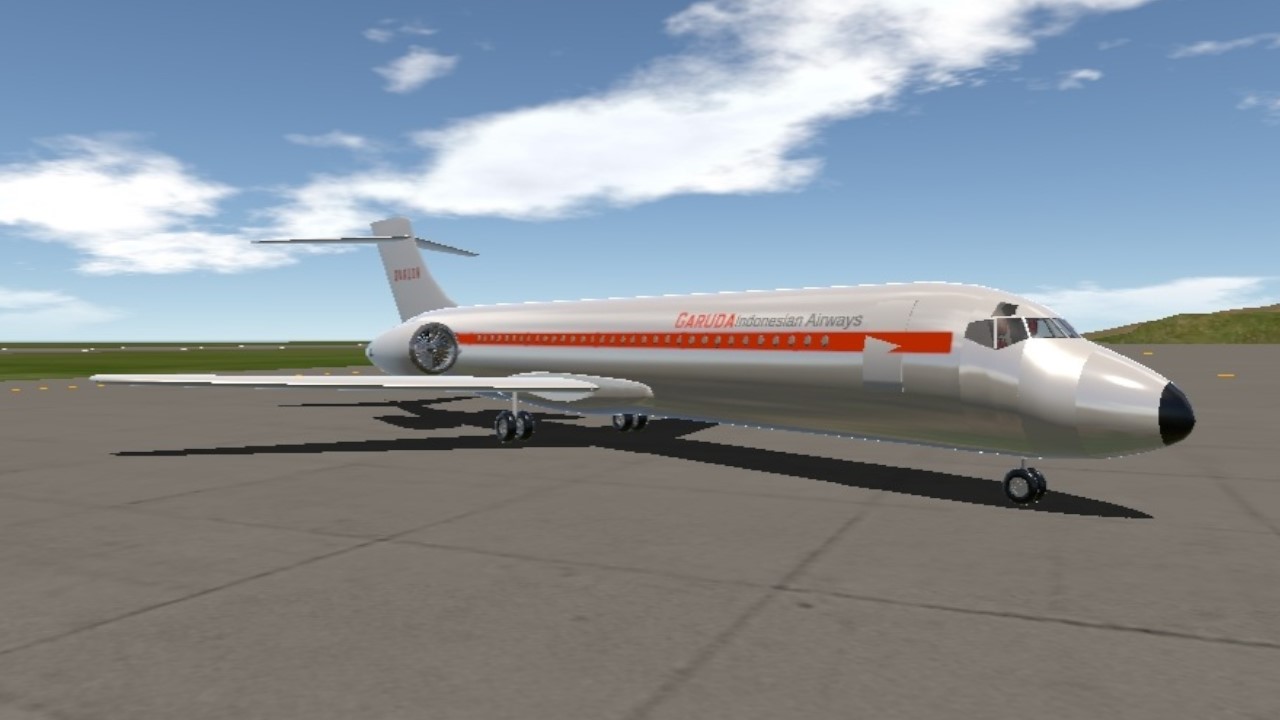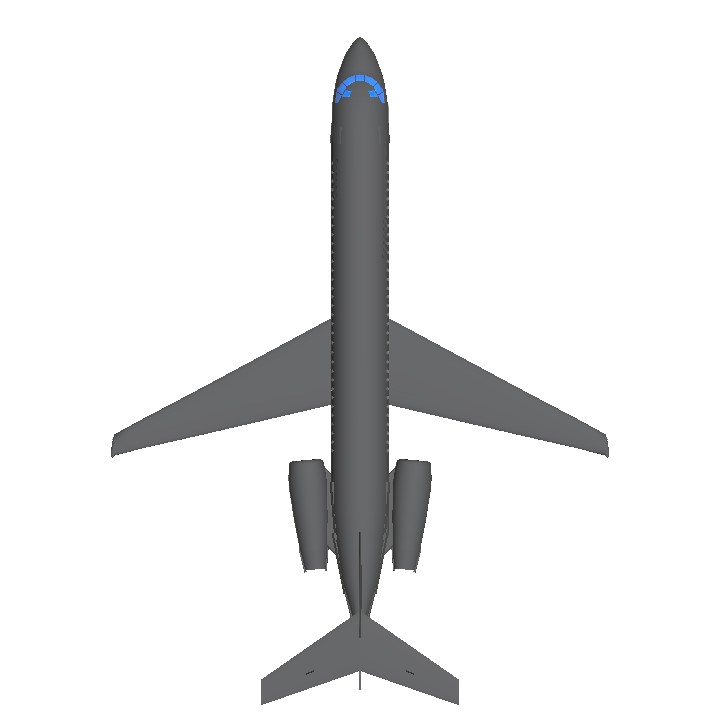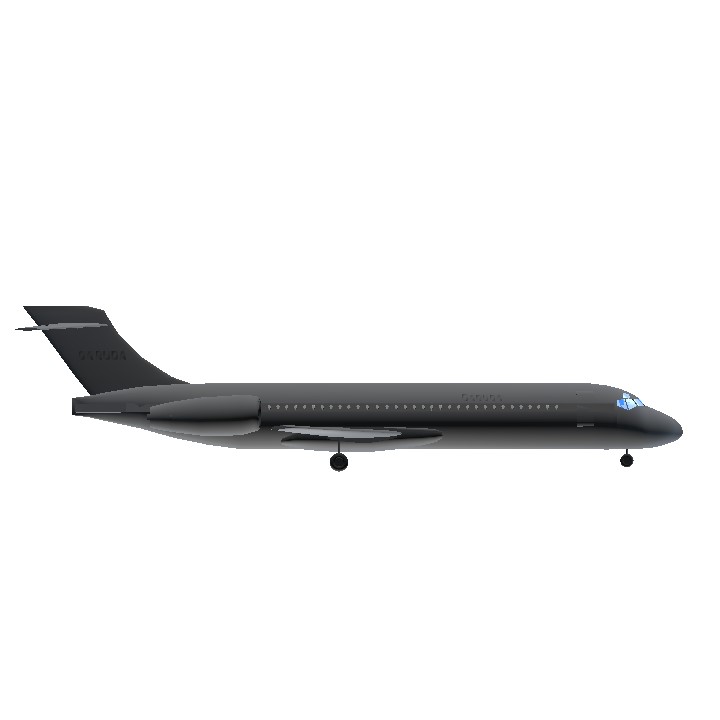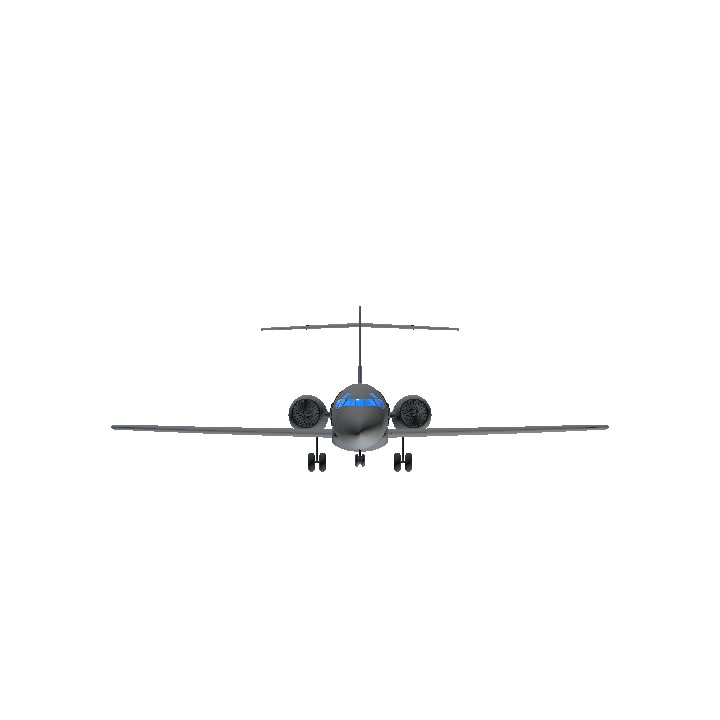Everyone welcome to the 60's where there is a Garuda Indonesia DC-9!

DC-9
The McDonnell Douglas DC-9 (initially the Douglas DC-9) is an American single-aisle airliner designed by the Douglas Aircraft Company. After introducing its heavy DC-8 in 1959, Douglas approved the smaller, all-new DC-9 for shorter flights on April 8, 1963. The DC-9-10 first flew on February 25, 1965 and gained its type certificate on November 23, to enter service with Delta Air Lines on December 8. With five seats across in economy, it had two rear-mounted Pratt & Whitney JT8D low-bypass turbofans under a T-tail for a cleaner wing, a two-person flight deck and built-in airstairs.The Series 10 are 104 ft (32 m) long for typically 90 coach seats. The Series 30, stretched by 15 ft (4.5 m) to seat 115 in economy, has a larger wing and more powerful engines for a higher maximum takeoff weight (MTOW); it first flew in August 1966 and entered service in February 1967. The Series 20 has the Series 10 fuselage, more powerful engines and the -30 improved wings; it first flew in September 1968 and entered service in January 1969. The Series 40 was further lengthened by 6 ft (2 m) for 125 passengers, and the final DC-9-50 series first flew in 1974, stretched again by 8 ft (2.5 m) for 135 passengers. When deliveries ended in October 1982, 976 had been built. Smaller variants competed with the BAC One-Eleven, Fokker F28 and Sud Aviation Caravelle, and larger ones with the original Boeing 737.
The DC-9 was followed by the MD-80 series in 1980, a lengthened DC-9-50 with a larger wing and a higher MTOW. This was further developed into the MD-90 in the early 1990s, as the body was stretched again, with V2500 high-bypass turbofans and an updated flight deck added. The shorter, final version, the MD-95, was renamed the Boeing 717 after McDonnell Douglas's merger with Boeing in 1997, powered by Rolls-Royce BR715 engines.
Control
AG 1: Landing Lights
AG 2: Engines On/Off
AG 3: Thrust Reverts
AG 4: Lights
AG 5: Brake+ Spoilers
AG 7: Cabin Lights
Trim: Trim
VTOL: Flaps
Roll: Yaw
How to Fly?
Take Off
•Take Off speed: 200-250 MPH
•Trim:0%
•Flaps:50%
Cruise:
•Thorttle: 50%
•Flaps:0%
•Trim:0% (while you need a altitude just set it to 50%)
Landing:
•Thorttle:20%
•Trim: 0%
•Flaps:100%
Speed:150-100mph
Photo





Enjoy the Flight in 60's ;)
Airline Info

Garuda Indonesia is the flag carrier of Indonesia, headquartered at Soekarno–Hatta International Airport. A successor of KLM Interinsulair Bedrijf, it is a member of SkyTeam and the second-largest airline of Indonesia after Lion Air, operating scheduled flights to a number of destinations across Asia, Europe, and Australia from its hubs, focus cities, as well as other cities for Haji. It is the only Indonesian airline that flies to the European airspace.At its peak from the late 1980s to the mid-1990s, Garuda operated an extensive network of flights all over the world, with regularly scheduled services to Adelaide, Cairo, Fukuoka, Johannesburg, Los Angeles, Paris, Rome and other cities in Europe, Australia and Asia.[4] In the late 1990s and early 2000s, a series of financial and operational difficulties hit the airline hard, causing it to drastically cut back services. In 2009, the airline undertook a five-year modernization plan known as the Quantum Leap, which overhauled the airline's brand, livery, logo and uniforms, as well as newer, more modern fleet and facilities and a renewed focus on international markets, and earning the airline awards such as Most Improved Airline, 5-Star Airline, and World's Best Cabin Crew by Skytrax.
The airline also operated a budget subsidiary, Citilink, which provided low-cost flights to multiple Indonesian destinations and was spun-off in 2012.[5] In November 2018, the airline took over operations as well as financial management of Sriwijaya Air by a cooperation agreement (KSO).[6] This partnership expired in December 2019.
Specifications
Spotlights
- XAircraftManufacturer 3.7 years ago
General Characteristics
- Predecessor XJ-90
- Successors 1 airplane(s) +21 bonus
- Created On Android
- Wingspan 95.8ft (29.2m)
- Length 138.5ft (42.2m)
- Height 42.9ft (13.1m)
- Empty Weight N/A
- Loaded Weight 41,950lbs (19,028kg)
Performance
- Power/Weight Ratio 1.366
- Wing Loading 28.5lbs/ft2 (139.0kg/m2)
- Wing Area 1,474.0ft2 (136.9m2)
- Drag Points 10355
Parts
- Number of Parts 281
- Control Surfaces 5
- Performance Cost 1,607





@JakiTheIndoAviationKid Lol
AEelegant:v this is me Yes
YOUR YOUTUBE SUBSCRIBER:v
@LionBlaze I will Report You
@LionBlaze U Mean?
@BassemT90 U Mean?
@AElegantGuy I didn't get you how ?
@AElegantGuy thank you:)
Walvis
Star 737
Just Select it :)
Do you want Custom Thumbnail Like Me?@BassemT90
@BassemT90 Just Spawn AI Plane
Awesome how to make ground traffic on phone ?